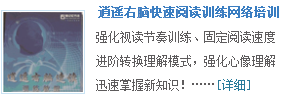What about the most delicious pasta? The ultimate gelato? The absolute superlative expresses the concepts of very, extremely, or most. In Italian, superlatives are formed by adding the suffix -issimo to an adjective or adverb after dropping the final vowel. There are four forms corresponding to gender and number).
FORMING SUPERLATIVES IN ITALIAN
alto (tall)
altissimo, altissima, altissimi, altissime
buono (good)
buonissimo, buonissima, buonissimi, buonissime
veloce (quick)
velocissimo, velocissima, velocissimi, velocissime
There are several adjectives that have irregular comparative and superlative forms.
IRREGULAR ITALIAN ADJECTIVES
ADJECTIVE
COMPARATIVE
ABSOLUTE SUPERLATIVE
alto (high)
superiore (higher)
supremo/sommo (highest)
basso (low)
inferiore (lower)
infimo (lowest)
buono (good)
migliore (better)
ottimo (best)
cattivo (bad)
peggiore (worse)
pessimo (worst)
grande (big)
maggiore (big)
massimo (biggest)
piccolo (small)
minore (smaller)
minimo (smallest)
There are other ways to express the absolute superior that don't require the -issimo form of the adjective. For example, the terms molto (a lot of), tanto (much), estremamente (extremely), or assai (very) can be used before the unchanged adjective. It depends on how dramatic the speaker wants to be! Compare: molto piccolo (very small) and piccolissimo (smallest)—it depends on the context.
NOTE: When forming the absolute superlative of adjectives ending in -co, -go, -ca, and -ga, add an h to the ending before -issimo: ricca/ricchissima, larga/larghissima, stanco/stanchissimo. This is done to maintain the hard "c" or hard "g" sound.
本文来自:逍遥右脑记忆 http://www.jiyifa.com/waiyu/waiyujiyi/8958.html
相关阅读:领悟日语学习方法2
商业信函常用语[俄汉英]
高考英语议论文模板
英语学习的五大原则
过来人说法语TCF考试一些经验



